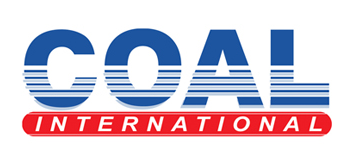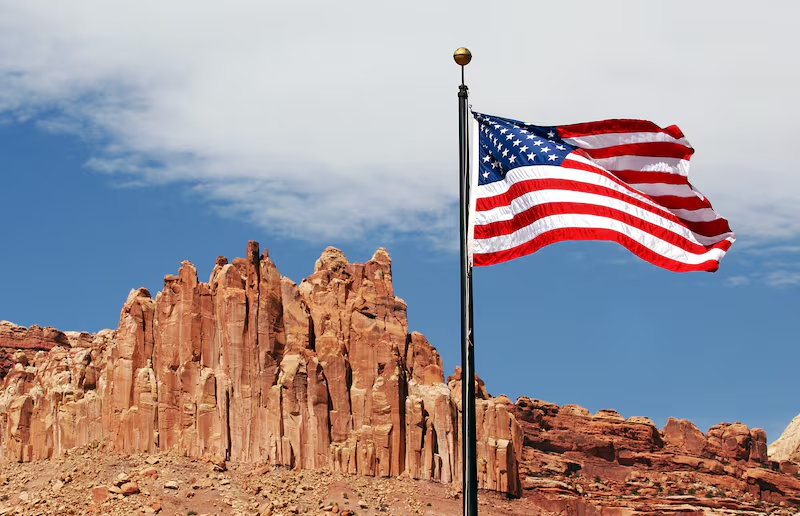More than 13 million acres of public lands were opened up for coal leasing by the Trump administration at the end of September.
The announcement, titled “Interior Unleashes American Coal Power in Bold Move to Advance Trump Administration Priorities,” outlined ways it believed efforts to incentivize greater coal production would benefit the country.
“By reducing the royalty rate for coal, increasing coal acres available for leasing, and unlocking critical minerals from mine waste, we are strengthening our economy, protecting national security, and ensuring that communities from Montana to Alabama benefit from good-paying jobs,” Interior Secretary Doug Burgum said in a statement in September.
“Washington doesn’t build prosperity, American workers and entrepreneurs do, and we’re giving them the tools to succeed.”
While the vast majority of the land opened up for coal leasing is in Montana, North Dakota and Wyoming, there is a relatively small amount — 48,000 acres — in Utah.
Those parcels sit next to some of the nation’s most popular national parks. They are also in areas that the Bureau of Land Management designated as “unsuitable” for coal leasing under George W. Bush back in 2008.
According to a recent review of BLM maps by the Southern Utah Wilderness Alliance, those tracts of land are directly adjacent to Capitol Reef National Park, with others approximately a mile from Bryce Canyon National Park and then some about a mile-and-a-half from Zion National Park.
“So, right on the doorstep of some of the nation’s most spectacular national parks,” said Steve Bloch, the legal director and attorney for the Southern Utah Wilderness Alliance.
There are other parcels that SUWA identified, too, that are adjacent to national recreation areas and monuments, including Glen Canyon and Grand Staircase-Escalante.
“It’s frankly astonishing that Secretary Burgum would choose to identify tracts of land within eyeshot of Bryce Canyon, Zion National Park, Capitol Reef National Park,” Bloch said. “And, I think, just shows his lack of common sense. These are places that unify all Americans — the love for the national parks, national monuments — and to put those places at risk is just wildly out of touch with what Americans want to see on their federal public lands.”
Why were these lands made available for coal leasing?
Burgum’s announcement followed several executive orders that seek greater natural resource extraction — “Unleashing American Energy” and “Reinvigorating America’s Beautiful Clean Coal Industry” — but the decision was not an order from the White House. It was authorized by Congress.
The directive was written into the One Big Beautiful Bill, which outlines federal tax and spending policies.
“This section requires Interior to make available for lease known recoverable coal resources of at least 4 million additional acres on federal land, not including federal land located in areas such as a National Conservation Area,” according to the provision in the bill
In simple terms, there are two ways to address a deficit: reduce spending or generate revenue. Selling coal leases is one way to drive revenue.
“Together, these sales represent hundreds of millions of tons of coal and decades of energy production. At the same time, a reduced 7% royalty rate will help ensure producers can compete in global markets while sustaining revenues for taxpayers,” read the Department of the Interior’s announcement.
“Interior’s actions reflect the Trump administration’s all-of-the-above energy strategy, ensuring abundant, affordable energy while reducing reliance on foreign sources of coal and minerals.”
Among the “tools to succeed” Burgum referred to was finding more than triple the amount of land mandated by the reconciliation bill — predominantly in the Intermountain West and some within sight lines of national parks — and making it available for coal leasing.

“Coal mines near Zion, Bryce Canyon or Capitol Reef? It’s absurd. It was decided decades ago that these lands would be off the table,” Cory MacNulty, National Parks Conservation Association southwest campaign director, said in a statement.
“This is an out-of-touch attempt to turn back the clock and force coal mining near Utah’s national parks.”
MacNulty is referring to the two current land-use plans covering parts of southern Utah — the Kanab Field Office RMP and the Richfield Field Office, both of which were established in 2008 during the second Bush administration. At that time, the lands were deemed “unsuitable” for surface coal mining and those uses were not permissible.
“These are the things that Utahns care about,” Bloch said. “Even in the George W. Bush administration, with that focus on fossil fuel development, they were savvy enough to know that this was a line not to cross.”
What’s next?
Coal leases are done by application, so they are driven by the private sector or the interested party. An entity would need to apply to take over a particular parcel of land.
For now, the land is available should a company want to pursue the various tracts the Trump administration opened up this fall. Whether anyone will is unclear.
A recent lease sale on one of the highest producing coal tracts in the nation — Montana’s Powder River Basin — attracted scant interest. It was the largest coal sale in over a decade and the sole bid was for less than a cent on each ton of coal. A price a hundred times smaller than the last bid in the region.
The administration rejected that bid earlier this week.
Regardless, the suggestion of coal mining near Utah’s national parks struck a chord with a number of conservationists.
“If you’re taking your family to go to the Zion Narrows, you might be driving through an open pit mine … if you’re driving your family through Capitol Reef National Park and you come out on the east side, there could be a coal mine right there,” Bloch said.
“If you’re driving to Yavimpa Point, which is the scenic drive in Bryce Canyon National Park — this national park that prides itself on some of the darkest night skies and the most expansive views in the nation — you could be seeing coal mines less than a mile away.”



